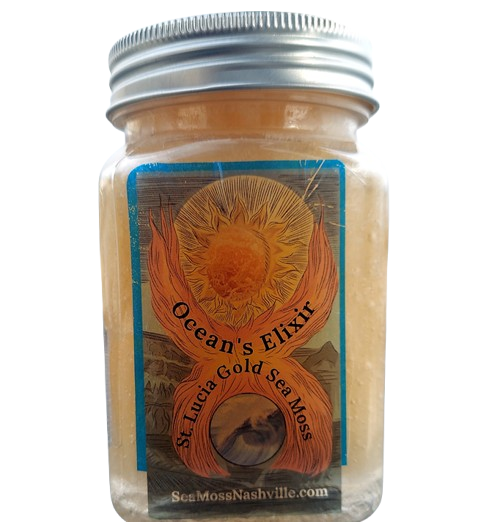history-of-sea-moss
St. Lucia Sea Moss
St. Lucia Sea Moss vs. Irish Moss: Classification And Origin
When it comes to the incredible benefits of sea moss, it’s important to understand the distinctions between different varieties. While Irish moss and St. Lucia sea moss share many similarities, there are some key differences in their classification and origin that are worth exploring.
The Classification of Sea Moss
Both Irish moss and St. Lucia sea moss belong to the Rhodophyta (red algae) family, scientifically known as Chondrus crispus. However, while Irish moss is the most common variety found in the North Atlantic region, St. Lucia sea moss is a distinct species endemic to the Caribbean.
The specific scientific name for St. Lucia sea moss is Kappaphycus alvarezii, whereas Irish moss is Chondrus crispus. This means they have slightly different genetic and chemical compositions, leading to unique nutritional profiles and potential health benefits.
Origin and Harvesting
As the name suggests, Irish moss is primarily found and harvested along the rocky coastlines of Ireland, the United Kingdom, and the northeastern United States. In contrast, St. Lucia sea moss is sustainably cultivated in the pristine waters of the Caribbean island of St. Lucia.
The growing conditions and environmental factors of these two distinct regions contribute to the unique characteristics of each sea moss variety. St. Lucia’s tropical climate and clear, nutrient-rich waters help produce a particularly vibrant and nutrient-dense sea moss.
Exploring the Differences
While both Irish moss and St. Lucia sea moss are excellent sources of vitamins, minerals, and beneficial compounds, the specific nutrient profiles can vary. St. Lucia sea moss is believed to contain higher levels of certain key nutrients, such as iodine, that are essential for thyroid health and metabolism.
Additionally, the cultivation and harvesting methods used for St. Lucia sea moss may contribute to its exceptional purity and potency. The sustainable, hand-harvesting techniques employed ensure the sea moss retains its full spectrum of beneficial properties.
Discover the St. Lucia Difference
When it comes to incorporating sea moss into your wellness routine, the origin and quality of the source matter. St. Lucia sea moss, with its unique classification and pristine Caribbean origins, offers a truly exceptional superfood experience. Unlock the transformative power of this remarkable gift from the sea and elevate your health to new heights.
Sea Moss Nashville - Nourish Your Health Naturally

St. Lucia Sea Moss vs. Irish Moss: Description
- St. Lucia sea moss comes in red, purple, and greenish-yellow hues. This sea moss has fronds with long, flat branches extending from them. It typically grows in clumps, and because it uses a holdfast root system, the moss usually grows well in shallow waters such as estuaries.
- St. Lucia sea moss is more commonly known as gold sea moss and is widely known for its use in the creation of agar. It gets harvested to create products from vitamins, supplements, and superfoods. It is now even being used to create makeup products.
- Irish sea moss is a tiny sea alga that typically has a red or dark appearance and is 7-8 inches long. It has a firm texture and is green when found closer to the ocean’s surface while getting dark red when it grows on the ocean floor. The moss has individual branches that look similar to a fan and are about half an inch or less wide.
St. Lucia Sea Moss vs. Irish Moss: Uses
Sea moss is like the jack of all trades regarding everything you can use for them. St. Lucia sea moss, in particular, is a significant source of agar which has thickening and preserving properties, and you may see them in food products such as jelly and soup. It is also a source of protein and vitamins with the following health benefits:
- Prevent respiratory ailments such as colds, flu, and pneumonia
- Hydrate the skin and relieve sunburn
- Relieve congestion and soothe a sore throat
- It contains vitamin C and boosts the immune system
Irish sea moss, like its cousin, contains thickening and preserving properties in the carrageenan it produces. In addition, research suggests that carrageenan can lower cholesterol levels and inflammation. However, it is essential to note that consuming too much Irish sea moss can increase your iodine intake, which has side effects, including vomiting and diarrhea.
